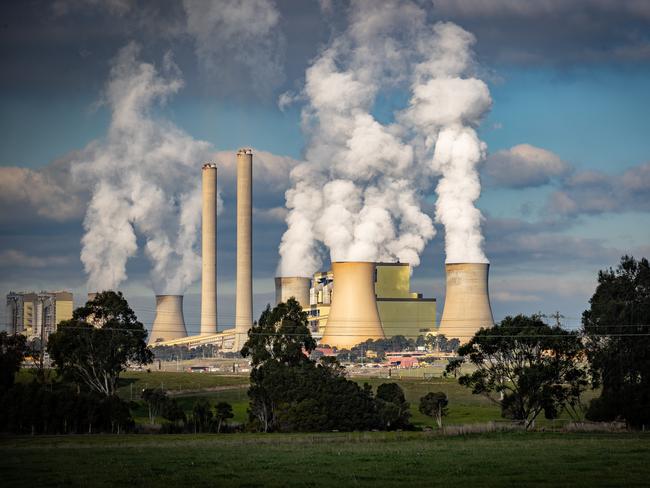Coal-fired power station workers could move to nuclear industry
Experts say there is a whole workforce with transferable skills ready for the proposed nuclear industry.

Victoria
Don't miss out on the headlines from Victoria. Followed categories will be added to My News.
Coal-fired power station staff are a “ready-made workforce” that could easily transfer their skills to new high-paying nuclear energy jobs.
Experts say Australia should also tap into the growing pipeline of skilled specialists for the AUKUS nuclear submarine program and train them for a local industry.
Electrical and mechanical engineers, earning $120,000 a year on average, are among a range of workers who would be able to apply their knowledge to the new proposed industry.
Under the Coalition’s plan, seven nuclear power plants would be located at existing coal-fired power station sites to use existing transmission infrastructure.

Centre for Radiation Research, Education and Innovation director Tony Hooker said the co-location would not only lower energy transmission costs but provide a “ready-made workforce with transferable skills”.
“The advantage of that is that all of your electrical engineers, mechanical engineers, all of your trades and ancillary staff … would just likely transition across to a nuclear power plant,” Professor Hooker said.

“We will need to add in some nuclear engineers, nuclear security and safety, radiation protection personnel to that workforce.
“There will be jobs for a nuclear regulator (too).”
Professor Hooker acknowledged the existing workforce was ageing and one of the challenges of the AUKUS agreement was establishing the workforce to build the sovereign capability.
But he said universities were increasing their nuclear education offering with new courses in nuclear radiation physics and nuclear chemistry from 2026.

“What we really need is to encourage those young kids into those STEM subjects,” Professor Hooker said.
“A lot of the angst around nuclear safety is really misguided.”
A small modular reactor proposed at Idaho in the US was forecast to generate a few thousand construction jobs, with almost 400 workers to be employed at the plant.
Loy Yang A power station in the Latrobe Valley, one of the sites slated for a nuclear power plan under the Coalition’s plan, has at least 600 employees.

Chartered engineer Tony Irwin spent more than 30 years commissioning and operating big nuclear power plants in Britain.
The Australian National University expert said nuclear power plants also had “hundreds of people” working five shifts because it was a 24/7 operation.
Professor Irwin said most plants had steam turbines to produce electricity, so turbine operators at coal-fired power stations would also have “easily transferable skills”.
“It works really well because it reuses all these skilled people and saves the community, which otherwise we would die when the power plants shut down,” he said.
Professor Irwin said the high-paying jobs were going to make nuclear an attractive area to work in, including for specialists from overseas.
He said they also provided job opportunities for nuclear submariners that had spent enough time under water.
“We’re doing all this for the AUKUS program anyway so it’s sort of a build-up of skills,” Professor Irwin said.
Originally published as Coal-fired power station workers could move to nuclear industry




